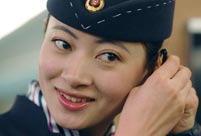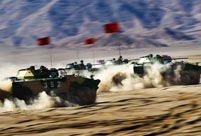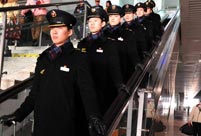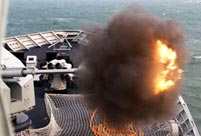 Cockfighting show staged in E. China's Heze during Spring Festival
Cockfighting show staged in E. China's Heze during Spring Festival
 Chinese New Year Flower Fair opens in San Francisco
Chinese New Year Flower Fair opens in San Francisco
 Festivities in Shanghai
Festivities in Shanghai
 PLA navy conducts drill in North China Sea
PLA navy conducts drill in North China Sea
 World's high-tech hotels
World's high-tech hotels
 Li Na poses with trophy on Brighton Beach in Melbourne
Li Na poses with trophy on Brighton Beach in Melbourne
 Six Chinese divers back safely after 300-meter saturation dive
Six Chinese divers back safely after 300-meter saturation dive
 Traditional wedding ceremony of Yao people
Traditional wedding ceremony of Yao people
 Taipei Game Show attracts geeky gamers
Taipei Game Show attracts geeky gamers
HARBIN, Feb. 1 -- Chinese researchers will dig deep this year as they endeavor to expose the atrocities of Japan's notorious Unit 731 during WWII, Chinese scholar told Xinhua on Friday.
Next year is the 80th anniversary of Japan's surrender.
Researchers at the center are busy translating copies of declassified U.S.archives. They are studying the oral testimony of 168 Chinese, forced into slavery at Unit 731. The center will leave no stone unturned, said Yang Yanjun, head of the International Research Center for Unit 731 Issues in Harbin. Only a comprehensive analysis of archives, both at home and abroad, will reveal the facts about Unit 731.
Unit 731 was a top-secret biological and chemical warfare research base established in Harbin in 1935: the nerve center of Japan's biological warfare in China and Southeast Asia during WWII.
More than 10,000 people were killed at Unit 731. Civilians and prisoners of war from China, the former Soviet Union, the Korean Peninsula and Mongolia all perished at the hands of Japan's scientists.
The retreating Japanese invaders blew up the base when the Soviet Union army took Harbin in 1945.
Hard evidence of Japanese crimes at Unit 731 comes in testimony from 168 Chinese workers forced into heavy labor there. The recollections were painfully compiled by the research center in the closing twenty years of the last century.
Luo Baixiang, a native of Binxian County, Harbin, suddenly found himself in handcuffs in September 1944 when he was walking on the street and sent with 69 others to Laowutun, part of Harbin administered by Unit 731 forces. He was 17 years old.
The prisoners lived in basic sheds in ditches about 1.5 meters deep, and were forced into construction work for more than ten hours a day. They were under constant watch and given very bad food. If unable to work due to poor health, they were beaten. Bleeding from the head, with broken arms and legs, the bodies of the prisoners were spirited away, Lou recalled.
"Many of these people were never seen again. Some were certainly used by the Japanese for bacteriological experiments," Luo said. "We were 70 when sent to Unit 731, but only 45 of us returned home. The missing 25 were killed by the Japanese."
Luo's words ring truer yet when we hear what Hou Kefa, another laborer at Unit 731 in 1942, has to say. Hou, from Pingfang District in Harbin, once saw a group of Japanese carrying corpses covered in white sheets from a truck parked near a cremator.
Zuo Xianliang, a farmer in Yanshou County, Harbin, worked as a slave in the timber yard at Unit 731 in June, 1945.
His parents, wife and children cried the whole night through and ate nothing on the day they heard he was to be taken to work at the base. Few laborers returned home alive.
Zuo contracted tuberculosis, but had to continue to work without any medical treatment. He was told by other workers that dead laborers were buried in Laowutun every day.
Despite the horror of his personal circumstances, Zuo never imagined that killing two wild rats would bring near disaster to the Chinese laborers.
When two yellow rats were found under a pile of wood, Zuo and his fellow prisoners stamped them to death. On hearing this, the Japanese overseer became furious and ordered 30 of the workers to stand in line. He slapped Zuo in the face twice and then ordered him to slap the worker next to him. When Zuo refused he was beaten and kicked, losing two teeth.
When the Japanese told the workers to catch rats alive, Zuo and his colleagues did not understand why they were so friendly to vermin. Many years later he discovered that Unit 731 used rats to incubate plague.
Zuo escaped from the site with 30 others on Aug. 13, 1945, just two days before Japan surrendered.
According to the archives, Japanese "bacterial forces", including Unit 731, released biological contaminants as part of military campaigns on 161 occasions, claiming more than 270,000 lives and infecting more than 2.37 million people with plague.
Kong Zhaoren, a villager in Shuangcheng, Harbin, was also at Unit 731 in 1940. He fed the Japanese forces' dogs for more than a year, eating the same food as dogs, according to Kong Shuzhen, his oldest daughter.
He often saw Japanese soldiers throwing Chinese people into the dog pens. At first, he thought they were dead, but later he saw with his own eyes that the mouths of those ripped apart were still moving and they were still alive. He was powerless to help.
Kong saw rats being raised in one underground tunnel and ammunition being stored in another. When his role was changed to caring for the troops' horses, he had to steal food from the canteen as he could not eat horse feed.
One night in autumn of 1941, an old cook in the canteen stole a soldier's blanket and gave it to Kong to keep him warm as he escaped.
"We will keep the blanket as evidence of history," said his daughter.
 3D film 'The Monkey King' premieres in Beijing
3D film 'The Monkey King' premieres in Beijing  Miss Chinese Int'l Pageant 2014 held in Hong Kong
Miss Chinese Int'l Pageant 2014 held in Hong Kong 'Golden Flowers' in the Spring Festival travel rush
'Golden Flowers' in the Spring Festival travel rush Li Na beats Cibulkova to win Australian Open
Li Na beats Cibulkova to win Australian Open Sexy models at Taipei Game Show 2014
Sexy models at Taipei Game Show 2014 'Living in ice house' competition held in central China
'Living in ice house' competition held in central China  Highlights of Chinese airborne troops'exercises
Highlights of Chinese airborne troops'exercises  All-male high speed train crew during Spring Festival travel rush
All-male high speed train crew during Spring Festival travel rush PLA navy drills in East China Sea
PLA navy drills in East China Sea President Xi visits border troops ahead of Lunar New Year
President Xi visits border troops ahead of Lunar New Year What do Chinese pack in their luggage in Spring Festival Rush?
What do Chinese pack in their luggage in Spring Festival Rush? Blind date fair in Hangzhou of Zhejiang province
Blind date fair in Hangzhou of Zhejiang province Film 'Where Are We Going, Dad' premiered in Beijing
Film 'Where Are We Going, Dad' premiered in Beijing  Australian Open champion Li Na returns to hometown Wuhan
Australian Open champion Li Na returns to hometown Wuhan Twin sisters serve during Spring Festival travel rush for the first time
Twin sisters serve during Spring Festival travel rush for the first timeDay|Week|Month